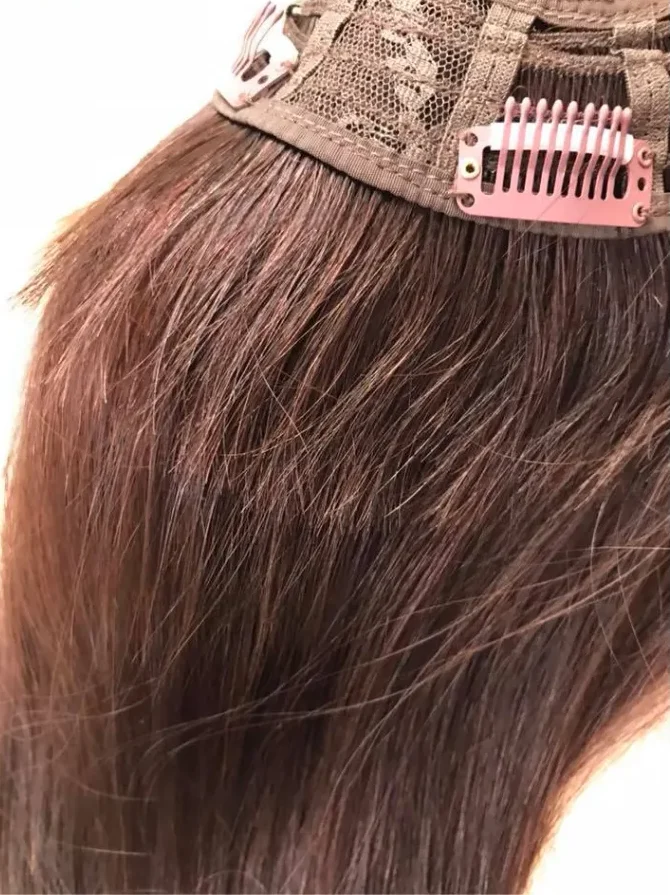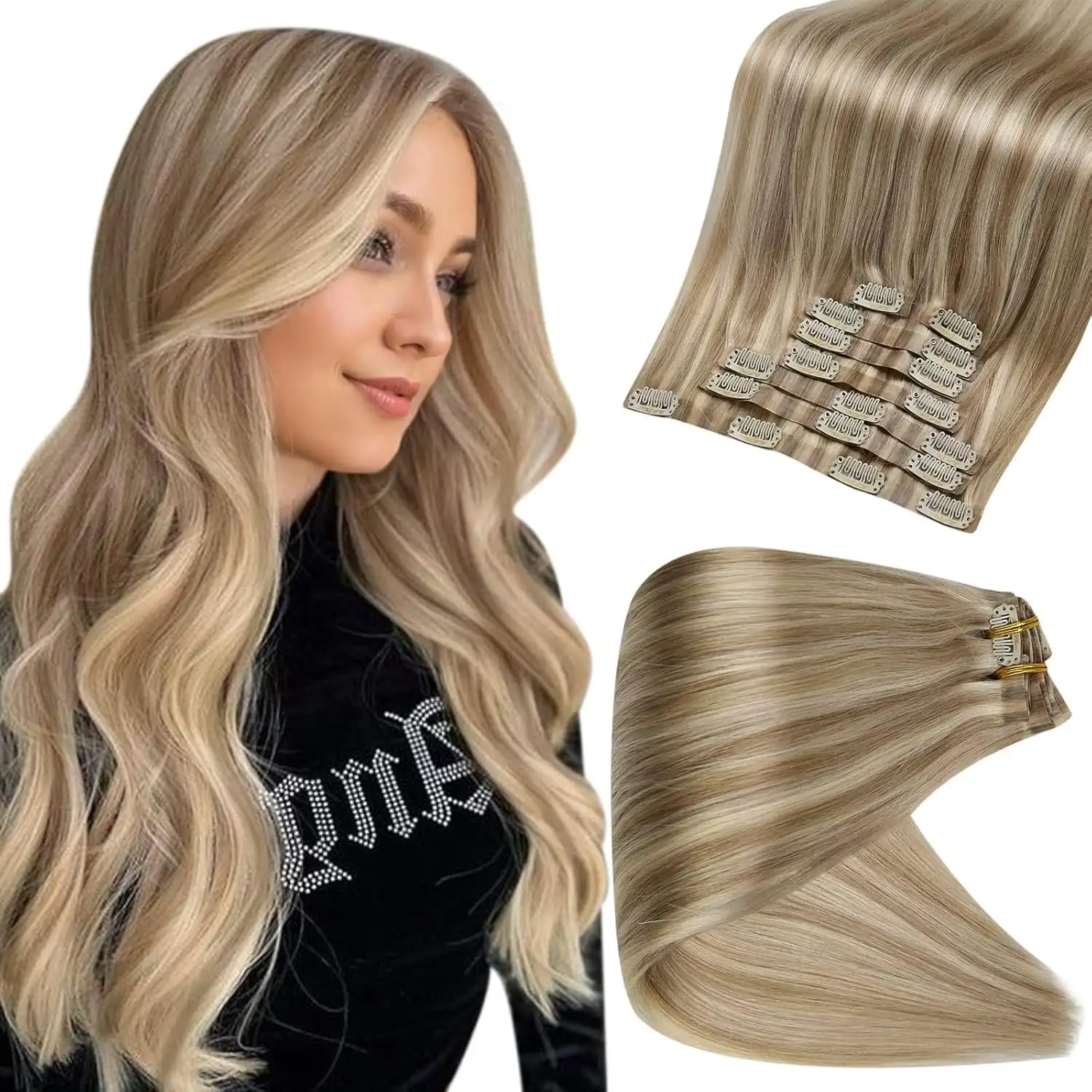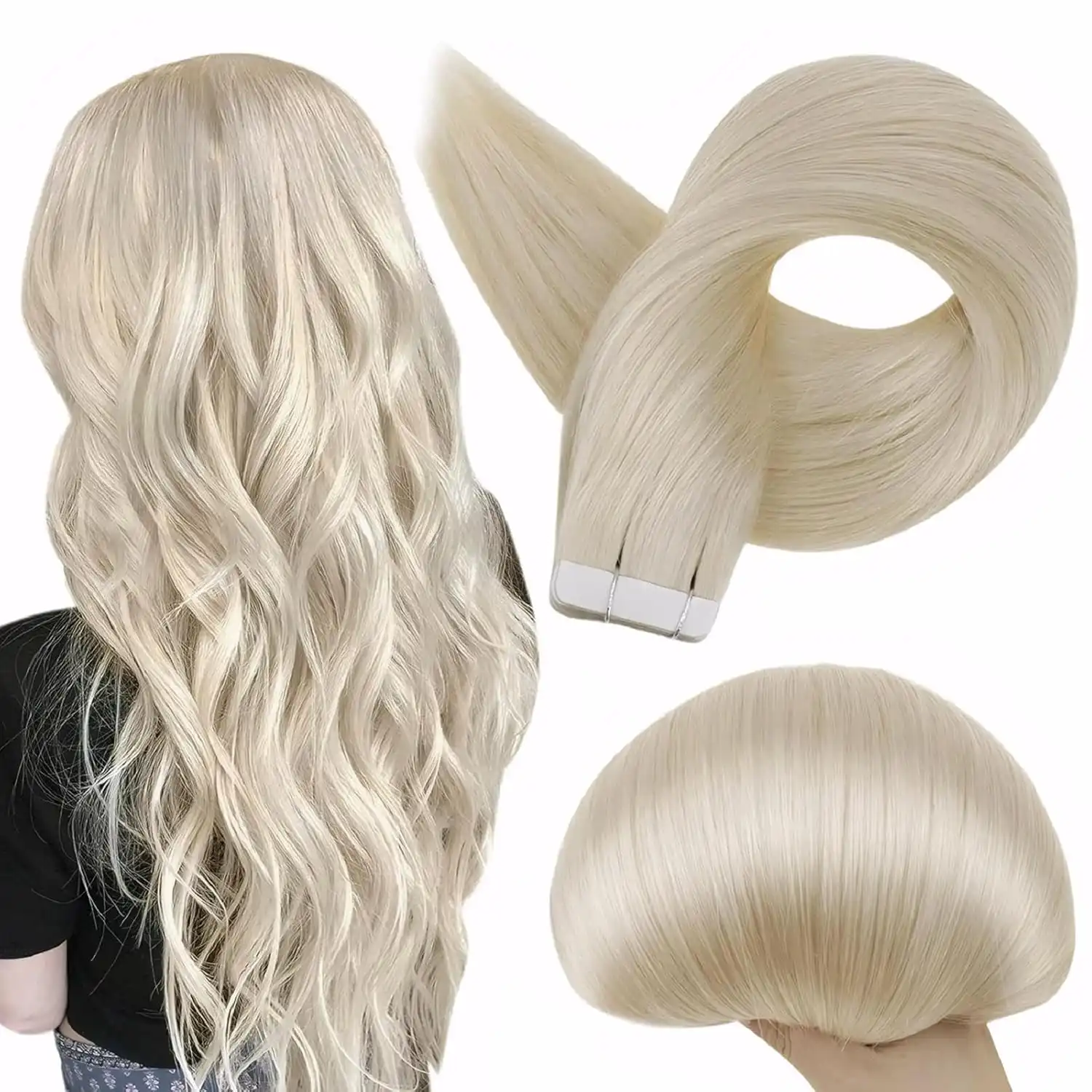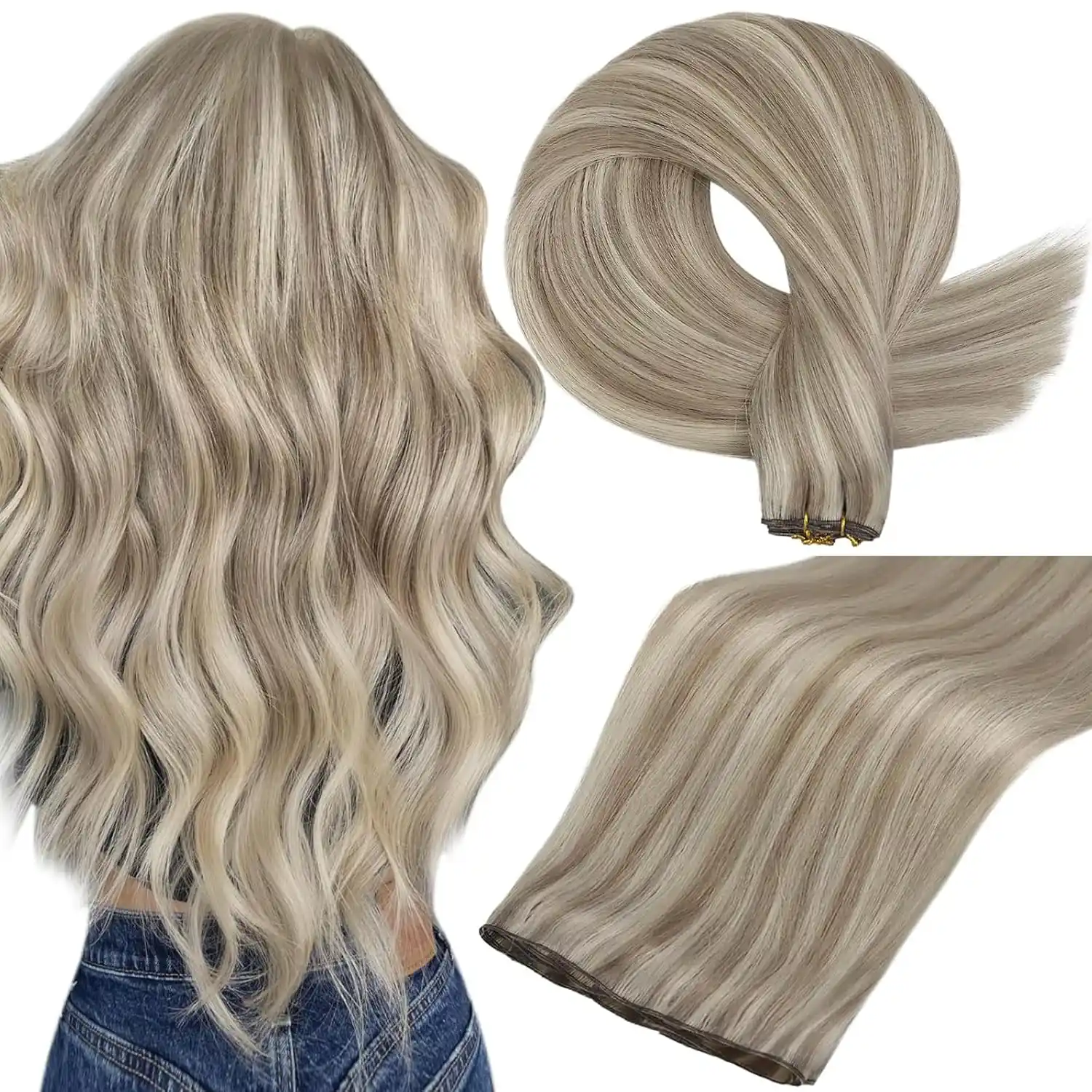If you’ve recently unboxed a new set of classic clip-in hair extensions or sew-in weft extensions installation, you might have noticed something puzzling. As you run your fingers along the top of the weft, you feel shorter strands that seem to loop back into the base, rather than flowing freely downwards. This is known as “return hair,” and it’s completely normal.

Why Does This Happen in Both Clip-Ins and Sew-in Weft?
The cause is rooted in the manufacturing process, specifically the method used to create a strong, durable, and discreet weft. This process is fundamentally the same for the wefts used in clip-in extensions and those sold on their own for salon use.

A Natural Byproduct of Sealing
During this folding and sealing process, it is inevitable that a small percentage of hair strands will be caught in a “U” shape. Their ends become permanently sealed inside the weft, pointing back towards the top. This is not a mistake; it is a natural consequence of creating a sealed, layered weft.
The Double-Wefting (Folding) Process
Most high-end extensions are made using a double-weft technique. A thin, even layer of hair is placed on a fabric base. This base is then folded over, and the layers of hair are sealed together under heat and pressure, creating a single, dense weft.

Return Hair: A Subtle Sign of Quality
It may seem counterintuitive, but a minimal amount of return hair is often an indicator of good craftsmanship. Here’s why:
Durability and Strength
The double-wefting process that causes return hair is the same process that creates an incredibly strong bond. This prevents the weft from shedding excessively and ensures it can withstand daily use (for clip-ins) or the tension of a professional installation (for sew-in wefts).
Density and a Seamless Look
This construction method allows for a very dense concentration of hair on a thin, flat base. This density is what gives extensions their volume and allows the weft to lie flat against your head, blending seamlessly with your natural hair.
Contrast with Lower Quality
Lower-quality wefts or synthetic alternatives may not use this folded technique. They might be single-layer and glued, which can lead to more shedding and a less natural, bulkier appearance.
Does It Affect the Look or Performance?
No. The presence of return hair has no negative impact on your extensions.
Completely Undetectable Once Worn
Whether you’ve clipped in your extensions or a stylist has installed them, these looped strands are hidden against your scalp and completely covered by the long, flowing hair of the extensions and your own natural hair.
No Impact on Styling
You can curl, straighten, and style your extensions as usual. The return hair is locked securely within the weft and does not interfere with styling.
Other Types Hair Extensions Without Return Hair
Seamless Clip Ins

Tape Ins

Genius Weft

Conclusion: Nothing to Worry About
Finding a small amount of return hair in your classic clip-in hair extensions or in a sew-in weft for a professional install is a standard occurrence. It is a natural byproduct of the robust manufacturing process that gives you a durable, dense, and beautiful product. Rather than a flaw, see it as a hallmark of a well-constructed weft, and be confident that it will not affect the stunning, natural-looking results you expect from your high-quality hair extensions.
Other articles
-
What if the hair extension color is slightly different from what you imagined?
We know you’re excited about your new hair extensions, and we understand the disappointment you feel when you excitedly open […]
-
Hair Extensions for Postpartum Hair Loss
Bringing new life into the world is one of the most beautiful experiences a woman can have. However, postpartum hair […]
-
Clip Care Guide: Preventing Broken Clips
Clip-in hair extensions are a fantastic beauty staple, offering instant length, volume, and versatility. But that dream can quickly turn […]